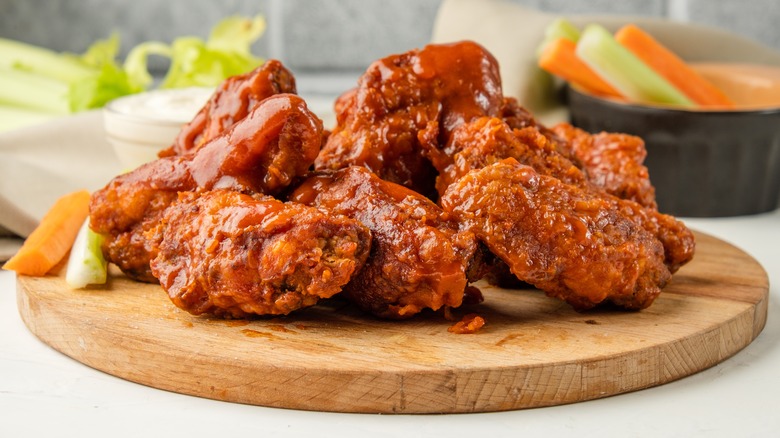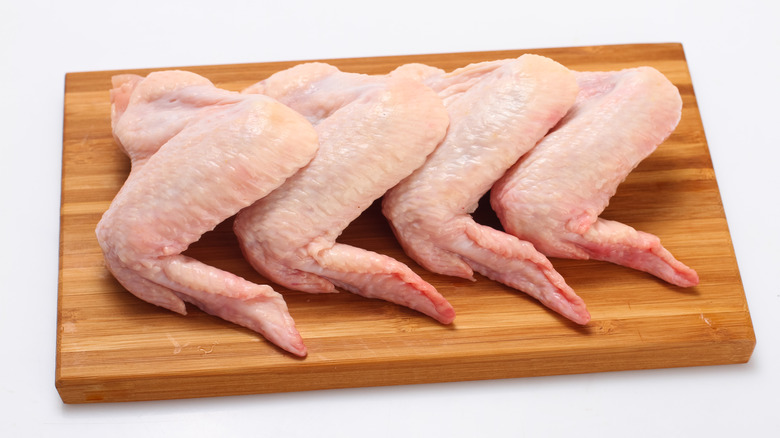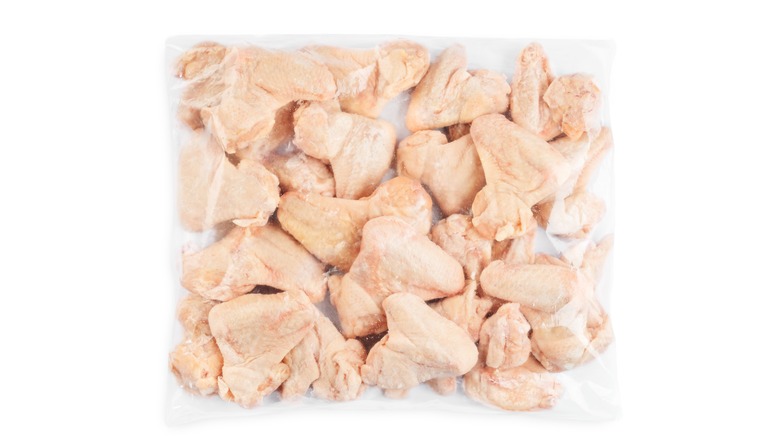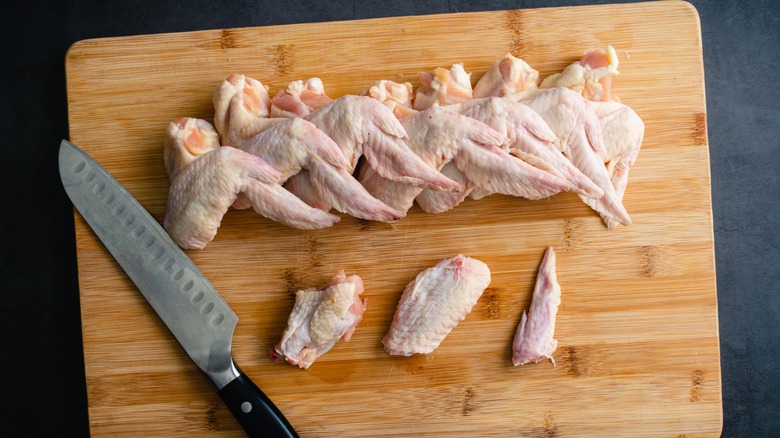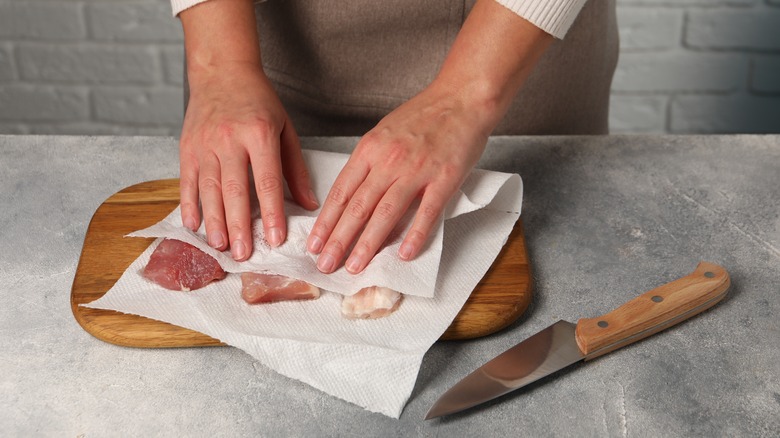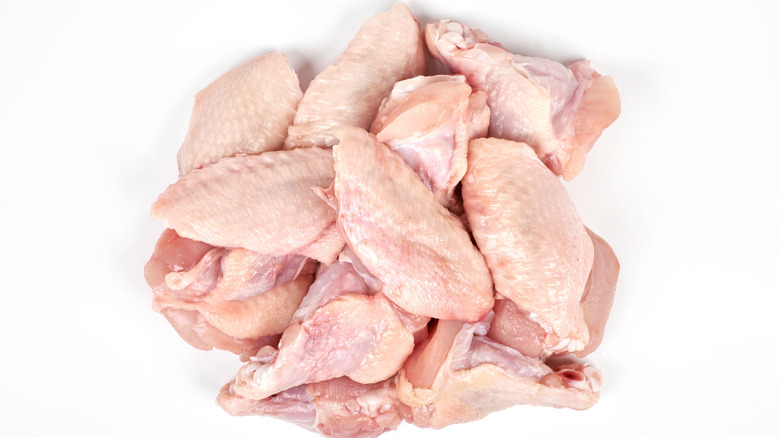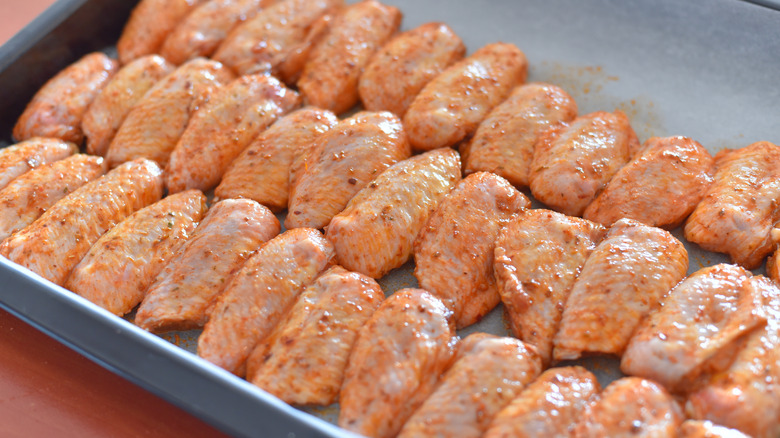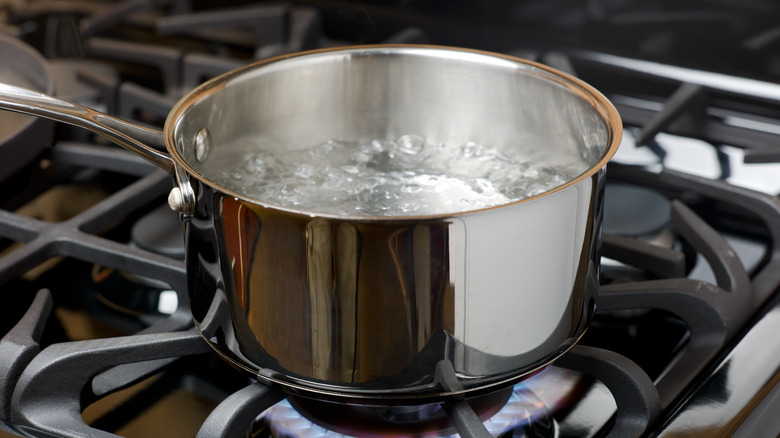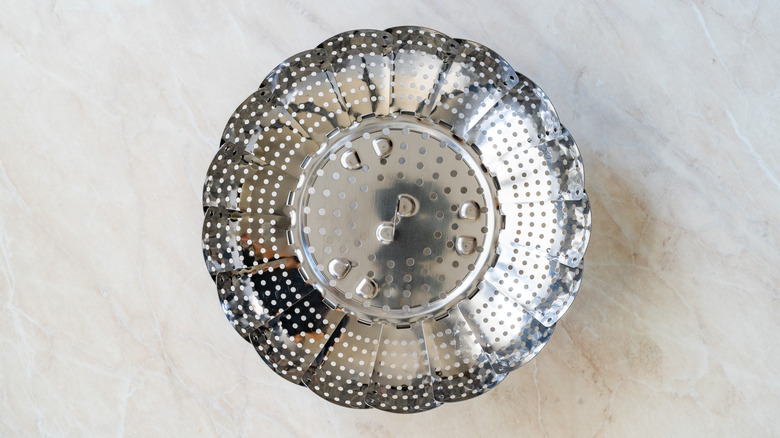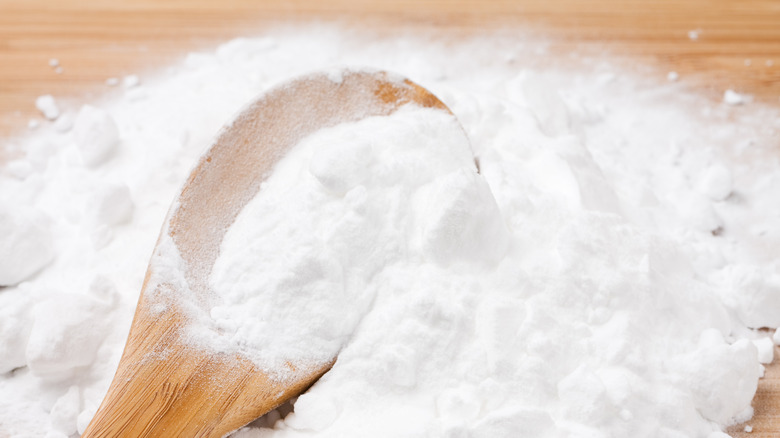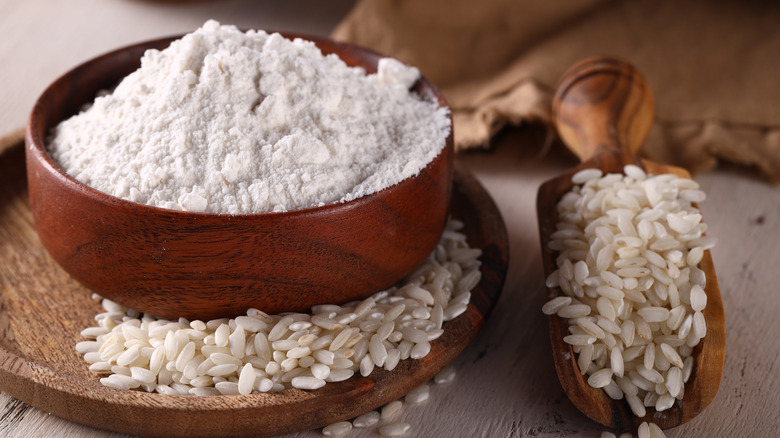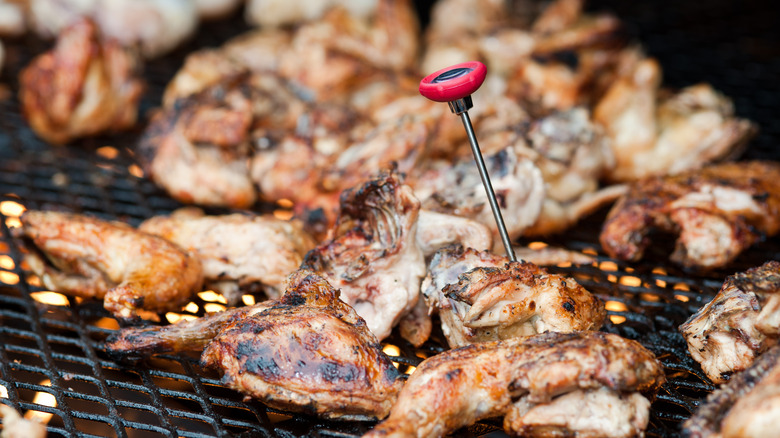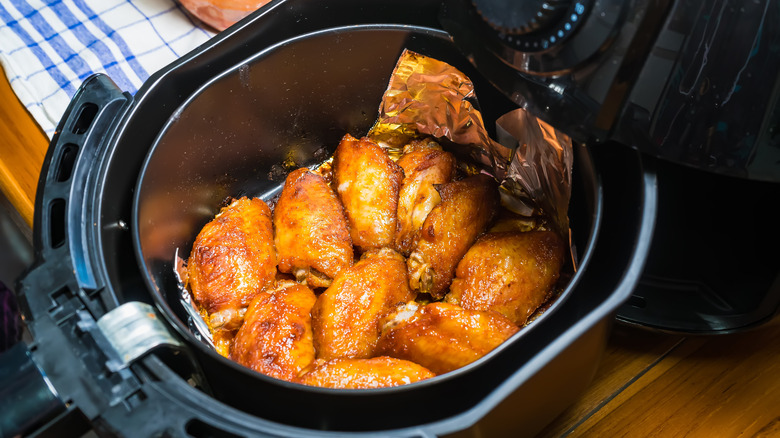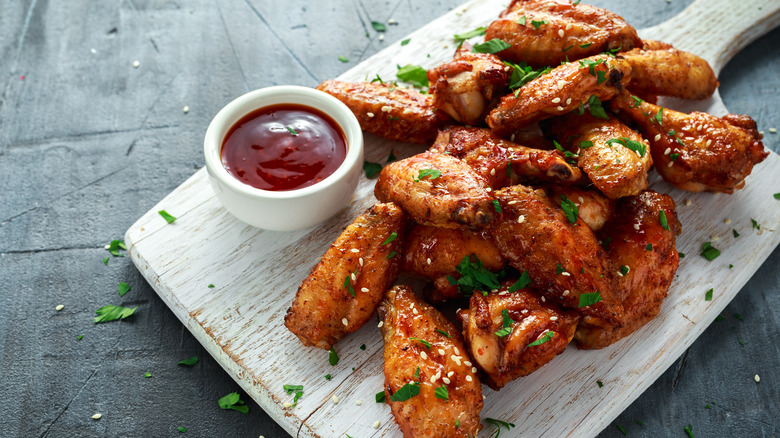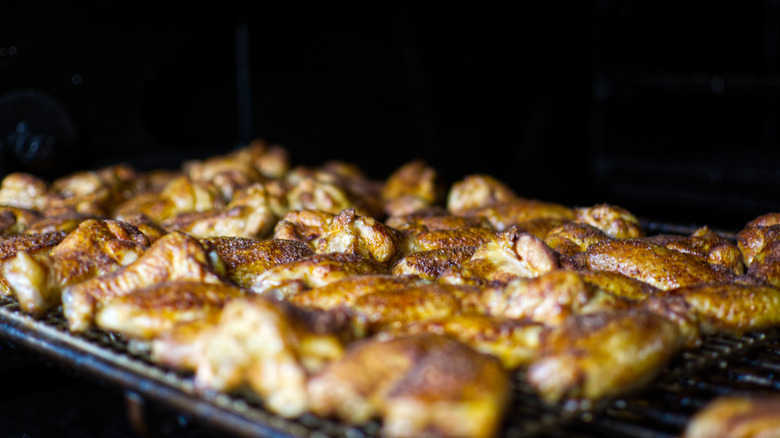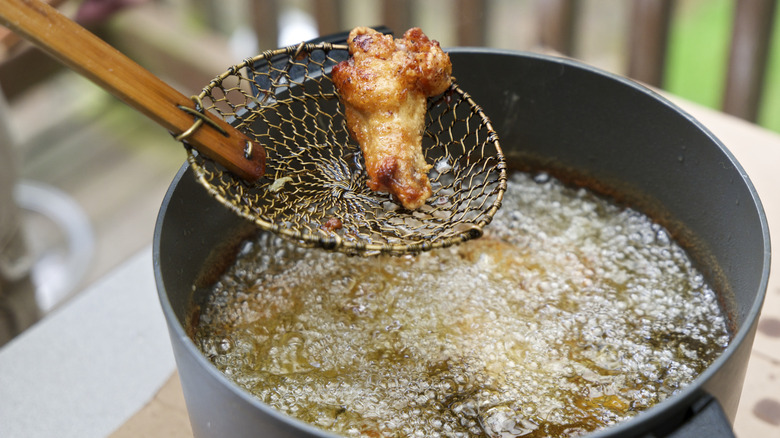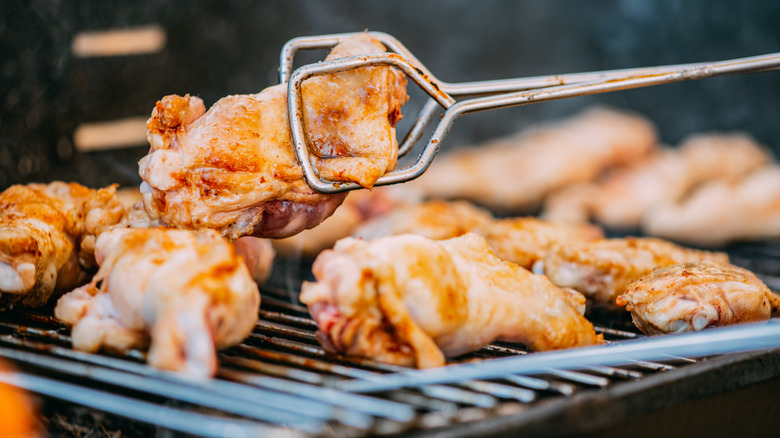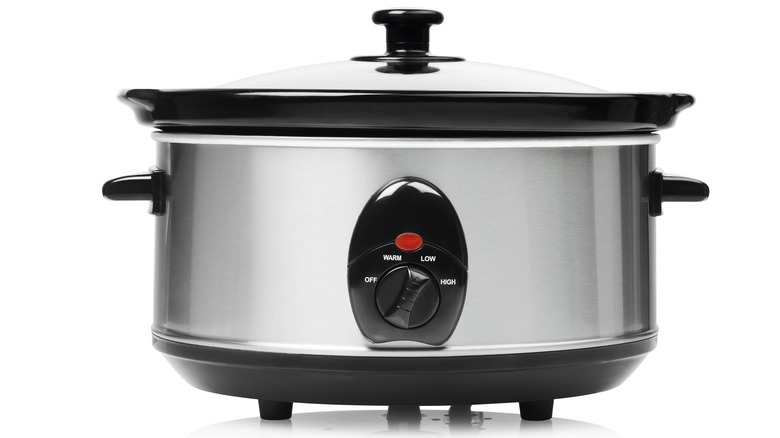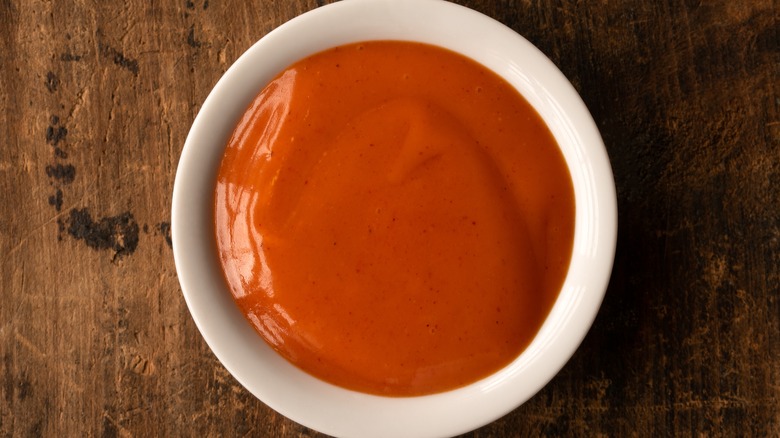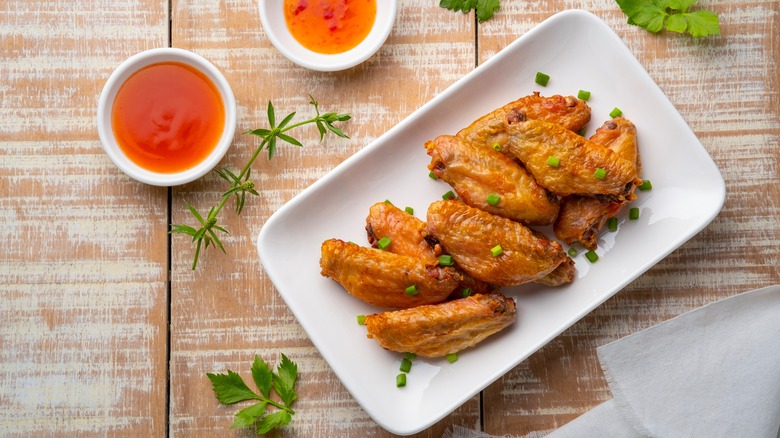19 Tricks That Will Seriously Upgrade Your Chicken Wings
Chicken wings are likely to appear on the menu whether you are having a cookout, tailgating, or watching the big game at a sports bar. An affordable, simple-to-eat finger food, wings have been integral within the Southern food scene for a long time but did not become popularized until the fried wing in hot sauce was invented at the Anchor Bar in Buffalo, New York, in 1964.
By the '80s, sports bars, restaurants, and fast food joints were all on the chicken wing bandwagon, serving various iterations with myriad sauces and flavoring combinations. Wings are so well-liked today that July 29 has been designated their National Day in the United States. Indeed, in 2023, the National Chicken Council estimated that Americans would consume roughly 1.45 billion chicken wings on Super Bowl weekend alone.
While you could go out to get wings, making them at home is infinitely less expensive and can often be more unique. The key is understanding how to make the crispiest, juiciest, most delicious wings. That's where I come in. As a chef, I am here to offer simple tricks that will seriously upgrade your chicken wings regardless of how you prepare them. Whether you fry, bake, grill, smoke, or pop them in the slow cooker, read on to find out how to up your chicken wing game for your next cookout or pigskin potluck.
1. Buy quality chicken wings
Though frozen wings can be convenient and save money, fresh chicken wings are always better. Whether you prefer drumettes or wingettes, fresh chicken is always juicier and doesn't have the potential of getting freezer burn, which can damage the texture and flavor of the meat. Additionally, freezing can cause bones to shatter, releasing blood into the meat, which is unseemly and can impact the flavor.
When purchasing fresh chicken, labels won't tell you much. If you are concerned with animal welfare, you can search for chicken that has been Certified Humane. If you are concerned with quality, opt for USDA-certified organic meat. The chief factor is that the meat is not artificially waterlogged, which can prevent it from becoming crispy and inflate the weight of the meat. For this reason, avoid wings with anything other than chicken and water on the label, and always search for air-chilled meat.
2. Thaw chicken wings completely
While fresh may be best, if you find frozen wings on sale and want to stock up for a rainy day, there is nothing wrong with that. Just be sure to thaw them completely in the refrigerator overnight before using them. This will ensure that they cook evenly and are safe to consume.
If you forget, the fastest way to thaw chicken wings is to place them in a leak-proof plastic bag in a glass or ceramic bowl and submerge them in cold water. Change the water every 30 minutes until thawed. A pound of chicken wings should thaw within an hour. Never leave chicken out on the countertop to thaw. While I do not advise it for numerous reasons ranging from flavor to texture, you can prepare frozen wings in a pinch, bu it will take 50% longer to cook to a safe minimum internal temperature.
3. Trim the chicken wings
When purchasing fresh or frozen chicken wings, you can often obtain ones that have already been trimmed and separated into wingettes and drumettes. Sometimes, you may only find whole wings, which can be cooked as is for a meal but aren't particularly convenient to consume as finger foods. When this occurs, you will need to trim the chicken wings yourself.
To do so, place the wing on a plastic cutting board skin side down and stretch it out to expose its three parts: the drumette, wingette, and tip. The drumette is the tiny drumstick that attaches to the shoulder of the bird, and the wingette is the center section. Once you locate the elbow joint, use a sharp knife to cut through it to divide the drumette and wingette. Then, locate the joint between the wingette and the tip and remove the tip. These can be saved and frozen to make homemade stock.
4. Pat chicken wings dry with a paper towel
When cooking any kind of meat, including chicken wings, you should always pat the surface of it dry with paper towels before cooking. Chicken may retain moisture in the packaging, particularly if it has been enhanced with a saline solution. This excess moisture can prevent the skin from crisping up during cooking.
The Maillard reaction, necessary for browning meat and giving it that quintessential savory flavor, commences at 280 degrees F. Any excess moisture on the surface of the chicken will insulate the meat, thereby preventing it from reaching this temperature quickly, making it dull, chewy, and flavorless.
And while discussing moisture on chicken, never wash your chicken before cooking it. This is both unnecessary and can cause cross-contamination. The best way to eliminate any bacteria on the chicken is to cook it to a safe minimum internal temperature and sanitize any surfaces with which it comes into contact.
5. Air dry chicken wings in the refrigerator
We have noted that moisture is the enemy of a perfectly crispy, golden brown, juicy chicken wing. Drying them with a paper towel is good, but taking this process one step further is better. Air drying your chicken wings in the refrigerator for at least an hour or overnight is the best way to eliminate excess moisture. The cold air wicks the moisture away, leaving a dry surface.
You will need a high-rimmed baking sheet lined with a wire rack to air-dry chicken wings. The wire rack will encourage airflow around the chicken wings, helping them to dehydrate. Once the chicken wings have been dried with paper towels, place them on the wire rack and put the baking sheet in the refrigerator, ideally below any perishables that may get contaminated by overflow juices. The meat is ready to use when it is no longer moist to the touch.
6. Dry brine chicken wings
While many recipes for chicken wings suggest marinating them to infuse them with flavor and tenderize them, when it comes to wings, a dry brine is a better option. The utility of marinades or wet brines in tenderizing meat is debatable, and the excess moisture from the marinade can prevent the wings from browning and developing crisp skin.
Start by patting the wings dry with a paper towel and placing them on a rimmed baking sheet lined with a wire rack. Then, create your dry brine seasoning, which should always include salt and plenty of herbs and spices. Always use coarse ground kosher or sea salt to minimize the possibility of over-salting your wings. Once you decide on your spice combination, coat your wings evenly and place them in the refrigerator for at least an hour to help draw out excess moisture and infuse the meat with flavor.
7. Boil chicken wings in water
Even when every other technique is implemented to achieve crispy skin, often you will find a squishy layer of fat between the meat and the exterior that creates an unappealing mouthfeel. While it may seem counterintuitive, one hack to getting crispier skin on chicken wings is to bathe them in boiling water. This trick works because it renders the subcutaneous fat located just below the exterior of the skin of the chicken wing.
Start by placing the chicken wings on a rimmed baking sheet lined with a wire rack skin side up. Pour boiling water over the chicken wings before patting them dry with a paper towel. From here, eliminate any excess moisture from the boiling water, or this poultry spa treatment will be counterproductive. Then air dry, dry brine, season, and cook the wings however you enjoy them.
8. Steam chicken wings
Steaming chicken wings before cooking them works similarly to dousing them in boiling water. Steam helps to render excess fat from the skin, resulting in a more palatable, crispy texture that doesn't have that underlying hint of squishiness between the meat and the exterior crust.
Steaming chicken wings is a simple process. Start by filling a saucepan with water and inserting a steamer basket. Cover the saucepan with a lid and bring it to a boil. Put the wings in the steamer basket and reduce the heat to a simmer. Allow the chicken wings to steam for 10 minutes before removing them from the steamer basket and drying them thoroughly with paper towels. Then, simply air dry, dry brine, season, and cook them.
9. Toss chicken wings in baking soda
While tossing chicken wings in baking soda sounds simplistic, the technique is more nuanced. It involves combining baking soda with other seasonings, including salt, for a dry-brine and allowing the wings to air dry in the refrigerator overnight before baking them.
The reason this works is because the alkaline nature of the baking soda helps to elevate the pH of the surface of the chicken wings, making them less acidic. This improves their capacity to brown and encourages bubbling and blistering of the skin, giving it the illusion of the same kind of crunch you get from a restaurant deep fryer.
The only hitch is the distinct metallic taste conferred by baking soda. Moderation is the key to temper this. A pound of chicken wings will only require a pinch of baking soda to do its job. Any remaining bitterness can be mitigated by incorporating acidic ingredients into your sauce of choice.
10. Dredge the chicken wings in rice flour
If you have a home fryer and are planning on deep frying your chicken wings, dredging them in flour is a common technique to achieve a crispy crust. That said, wheat flour may not be the most desirable ingredient for obtaining the crispiest and healthiest fried chicken wings. Rice flour is the new batter du jour.
Rice flour has long been used in Asian cuisine for batters and in Southern cooking since the 1900s due to its affordability. Only now are many restaurants discovering that it can produce a delightful light crunch in myriad applications, including fried chicken wings. And it is healthier. In addition to being gluten-free, a study conducted by the Agricultural Research Service, a subsidiary of the USDA, determined that long-grain white rice flour batters absorbed 55% less oil than those that are wheat-based, making it a win-win for utility and nutrition.
11. Use a thermometer on your chicken wings
As with any meat, the only way to accurately determine the internal temperature of chicken wings is to use a properly calibrated thermometer inserted into the thickest portion of the wingette or drumette without touching the bone. With chicken, it is necessary to cook the meat to at least 165 degrees F, the lowest safe minimum internal temperature at which chicken can be consumed.
That said, because chicken wings are considered dark meat, they can and should be cooked to a higher temperature to achieve optimal results. This is because of the amount of bone and cartilage in chicken wings. The connective tissues binding the meat to the bone will not dissolve until they reach a higher temperature of 175 degrees F. The collagen will yield at this point, resulting in moist meat that falls off the bone.
12. Use the air fryer for chicken wings
Air fryers are all the rage. They can replace a deep fryer and achieve similar crispy results without the fat or calories of excess oil. They are also infinitely less messy to clean up. While they can create moist, juicy, and impossibly crispy chicken wings, there are a couple of pitfalls to avoid.
First, never put too many wings in the basket of your air fryer at once. Doing so will inhibit airflow from circulating about the wings, which can result in soggy, undercooked chicken. For best results, split the wings in batches. And make sure you cook drumettes and wingettes separately, as they take slightly different amounts of time to be done. Finally, never use a wet batter on air fryer wings; these can gunk up your unit and cause the wings to be mushy. Save the wet ingredients for the finishing sauce.
13. Use a baking rack for chicken wings
If you plan to bake your wings in the oven, there are a few things to remember. The most crucial point to consider is what you place them on, and the best option is a rimmed baking sheet lined with a wire rack. Placing the chicken wings on a rack will enable airflow to circulate, helping them to crisp up and cook evenly. It's also best to place the baking sheet in the lower third of the oven, where the heating element is typically located on most ovens.
Additional considerations include not crowding the pan and setting the oven at too high a temperature. Keeping the wings in a single layer spaced apart will again encourage even air and heat circulation and ensure they crisp up on all sides without steaming. Where cooking temperature is concerned, I recommend setting the oven between 350 and 375 degrees F. Any higher can result in a burnt exterior while the interior remains raw.
14. Smoke the chicken wings
Smoked chicken wings are a favorite of many because of their impossibly tender texture and distinctive smoky flavor. However, they lack the crisp skin that fried chicken wing fanatics are fond of. This may be a fair trade-off. When smoking wings, you will want to follow the directions of your particular smoker for the best results and use whatever wood you prefer. That said, there are some tips to keep in mind.
You will want to use a dry rub versus a marinade to season smoked wings. Be sure you don't crowd the wings in the smoker, or otherwise, they won't cook evenly, and the smoke won't have the opportunity to permeate all sides of the meat. Lastly, before tossing them in sauce, you may want to pop them on the grill or under the broiler to help crisp up the skin somewhat.
15. Use the right temperature and oil to fry chicken wings
If you plan to fry your chicken wings and do not own an at-home fryer, use a heavy-duty stockpot deep enough to fill halfway with oil without splattering. A cast iron Dutch oven or stainless steel vessel is ideal because it conducts heat well. The best oil for this task is one with a high smoke point that won't burn, such as peanut or avocado oil.
Use a candy thermometer to monitor the oil temperature in your pot to ensure your wings cook evenly. The ideal cooking temperature for wings is about 350 degrees F. Anything higher can cause the skin to burn before the flesh is cooked; anything lower will create soggy, greasy wings. Do not overload the pot or you risk lowering the temperature of your oil too much. Work in batches to maintain an even cooking temperature, and don't forget to drain excess oil from your wings on paper towels after frying.
16. Grease chicken wings before grilling them
Grilled wings are delicious because they take on color and intense smoky flavor, but they take some finesse to master. Before you begin grilling, make sure you have cleaned your grill thoroughly. Toss your wings in vegetable or peanut oil to prevent them from sticking to the grill. Lastly, season them with a dry rub before putting them on the grill.
The ideal way to grill wings is to use the Two-Zone Method, which involves heating your grill to two different temperatures. The high heat side should register around 400 degrees F, while the lower temperature side remains at about 350 degrees F. Start by searing the wings on the high heat side to achieve color before transferring them to the lower heat side. Cover the wings with a lid and allow them to cook until they reach an internal temperature of 175 degrees F before removing them from the grill.
17. Use the slow cooker for chicken wings
Using a slow cooker to make wings does economize on time somewhat and results in impossibly tender fall-off-the-bone meat. The only hitch is that you cannot crisp up the skin in the crock pot. But there is a workaround. Before adding your wings to the crock pot, place them on a baking sheet under the broiler to crisp them up, turning them occasionally to brown evenly.
Once broiled, add your wings and whatever sauce you want to cook them with into the crock pot. Chicken wings should take approximately two to three hours to cook on HIGH or four to five on LOW. Never follow a recipe that suggests cooking chicken wings in a slow cooker from a frozen state. This is dangerous and can result in the wings remaining in the Danger Zone, where bacteria can multiply for too long, causing a foodborne illness.
18. Warm up the sauce for your chicken wings
As previously noted, wet marinades are less effective in producing crispy wings, and those with high sugar content can cause the skin of the chicken to burn before the meat has cooked. Adding the sauce after the wings have finished cooking using whatever method you prefer is ideal for maintaining that crunchy exterior.
Before doing so, it is advisable to preheat your sauce. Doing so will prevent the sauce from cooling down your wings and rendering the skin soggy. Another suggestion to help the sauce adhere to your wings more effectively is to whisk a couple of tablespoons of butter into it, which will thin it out and make it glossy. Once cooked, place the wings in a large glass or ceramic bowl and toss them with the sauce until completely coated before serving.
19. Try exotic sauces for chicken wings
While Buffalo sauce or Frank's Red Hot are classics, plenty of other ways to dress up your wings to appeal to your guests and kick up your game-day snacking exist. The key is to opt for sauces that are well-balanced in flavors, with elements of acidity, sweetness, salt, umami, and heat if you like your wings spicy.
I enjoy incorporating exotic international ingredients for flavor. For heat, try swapping plain hot sauce with gochujang or sriracha, which can impart spice and funky, umami elements. For a sweet component, honey, maple syrup, and jams or preserves are a nuanced change of pace from sugar. When hunting for an alternative to salt, try using ingredients like soy sauce, miso paste, or fish sauce. Whatever route you go, do not be afraid to get creative and provide your guests with plenty of napkins.
